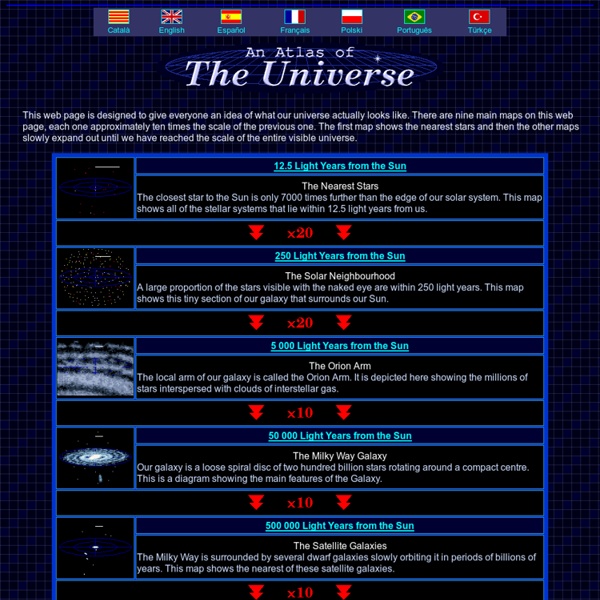



Periodic Table of the Elements SIMBAD Astronomical Database What is SIMBAD, and what is it not ? % The purpose of Simbad is to provide information on astronomical objects of interest which have been studied in scientific articles. Simbad is a dynamic database, updated every working day. It provides the bibliography, as well as available basic information such as the nature of the object, its coordinates, magnitudes, proper motions and parallax, velocity/redshift, size, spectral or morphological type, and the multitude of names (identifiers) given in the literature. Simbad is a meta-compilation built from what is published in the literature, and from our expertise on cross-identifications. Simbad is not a catalogue, and should not be used as a catalogue. SJAA | San Jose Astronomical Association
Determine Your Longitude With Jupiter's Moons It was MIT physicist Philip Morrison on a television documentary who taught me how to use Jupiter's moons as a system for synchronizing clocks, the first step in calculating longitude with astronomical observations. With an ephemeris for Jupiter satellite transits and occultations that is accurate for the time at the Royal Greenwich Observatory, you can synchronize your clock to the observatory's by watching the scheduled event. The difference between your local time and Greenwich local time reveals your longitude. On a clear night in late February, I decided to try this experiment. These days it's easy to set your watch to GMT. At about 8:40 p.m., I had my mount aligned and tracking, and Jupiter was looking big and beautiful. Finally it was clear that nothing was left. Following through with the experiment, now that I had a clock synchronized to GMT, I could calculate the sidereal time at Greenwich.
relativity Lunar Sinuous Rilles Atlas The Atlas of Lunar Sinuous Rilles is a comprehensive collection of images of 195 lunar sinuous rilles that are globally distributed around the Moon. The interface for the atlas, seen below, contains red circles that represent the source locations of each sinuous rille. Sinuous rilles are identified with numbers that correlate with a matching set of numbers in a database accessible at a link below. The atlas allows the user to zoom into the sinuous rille of interest by centering the region of interest on the screen and scrolling the mouse wheel or clicking shift on the keyboard (click control to zoom out). Alternatively, the user can select the sinuous rille of interest by number from the drop-down menu at the top right of the Lunar Reconnaissance Orbiter Camera’s (LROC) Wide Angle Camera (WAC) image mosaic. Reference: Hurwitz, D. Additional information and an extended published database can be accessed at the following website:
Kepler's laws of planetary motion In astronomy, Kepler's laws of planetary motion are three scientific laws describing the motion of planets around the Sun. Kepler's laws are now traditionally enumerated in this way: Figure 1: Illustration of Kepler's three laws with two planetary orbits. (1) The orbits are ellipses, with focal points ƒ1 and ƒ2 for the first planet and ƒ1 and ƒ3 for the second planet. The Sun is placed in focal point ƒ1. (2) The two shaded sectors A1 and A2 have the same surface area and the time for planet 1 to cover segment A1 is equal to the time to cover segment A2. (3) The total orbit times for planet 1 and planet 2 have a ratio a13/2 : a23/2. Most planetary orbits are almost circles, so it is not apparent that they are actually ellipses. Isaac Newton showed in 1687 that relationships like Kepler's would apply in the solar system to a good approximation, as consequences of his own laws of motion and law of universal gravitation. Nomenclature[edit] History[edit] First law[edit] Second law[edit] and height
PHYSICS, RELATIVITY, GRAVITATION, COSMOLOGY AND MATHEMATICS - NEW THEORIES AND FORMULATIONS